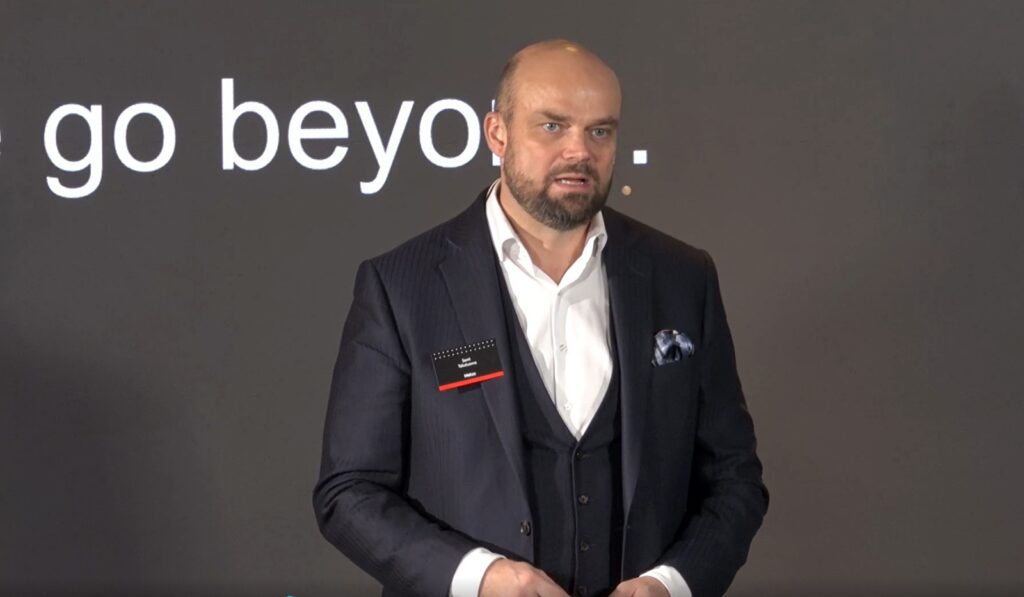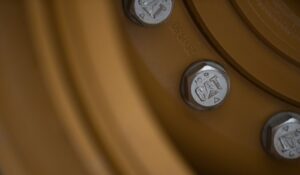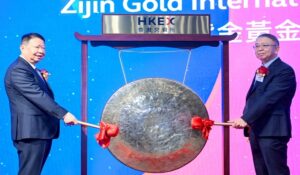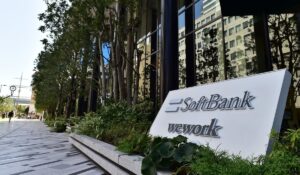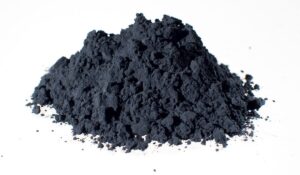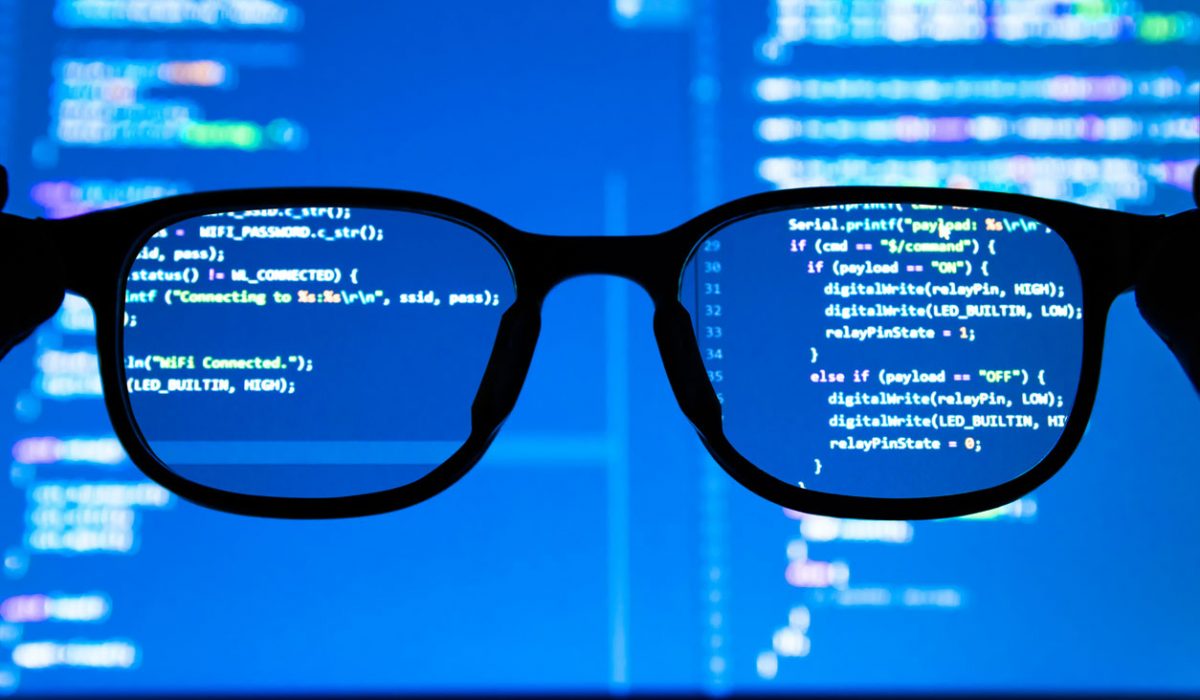Five years on from its major amalgamation with Outotec, Finland’s Metso is looking to tap a rich base of installed copper, gold and iron ore plants and ride vital new comminution and flotation growth trends to be the 800-pound gorilla in the global mineral processing equipment market in 2028 and beyond.
Mining the base to grow high-margin aftermarket sales and building on its leading position in major mineral sectors with traditional equipment are keys to Metso’s quest for dominance.
CEO Sami Takaluoma told analysts at the company’s latest Capital Markets Day this month that Metso aimed to grow revenues and profits off its impressive global distribution and service footprint – achieving 7% revenue CAGR and 20% EBITDA margins – to maintain high shareholder returns and strong capital spending while remaining an active bolt-on M&A player with a robust balance sheet.
Having doubled in size to circa-€9.88 billion (US$11.6 billion) since 2020, Helsinki-listed Metso is running ahead of rivals such as Scotland-based Weir Group and Denmark’s FLSmidth. Weir is also worth close to US$10 billion and FLS, having recently pared off cement to become totally minerals focused, has a circa-$4.23 billion market value. All three have seen their share price rise by about 30% in 2025.
Metso’s $5.3 billion 2024 revenue – 75% minerals – was down on its 2023 peak but in front of Weir’s minerals-dominated $3.35 billion and FLS, which is looking to crack $2.3 billion as a pure mineral processing equipment company this year.
All three are sans the large Russian mining market presence they had before the 2022 Ukraine invasion.
China, once a promising market, looms as their biggest external threat over the next decade.
Despite the overall world mining market contraction, Metso doesn’t see c$6.9 billion annual group sales in 2028 as too much of a stretch if it can unlock more of what it sees as a huge latent aftermarket and penetrate deeper into the large minerals pump and screen markets. And if more of the world’s big copper projects get moving.
The red metal accounts for 40% of Metso’s minerals-segment sales – capital equipment and aftermarket – and it has strong historical connections with copper sector leaders. New projects are spread across the globe but USA, Argentina, Chile and parts of Africa and central Asia loom particularly large given moves to expedite production from greenfield and brownfield sites. For the US and Argentina, in particular, this would fly in the face of long-term anti-development trends.
“I don’t think that the geographies as such are so important,” Takaluoma said. “It is the commodity demand that is driving [development] more at the moment and into the future.
“Copper is seen as the metal that will not have enough production in the future. Most likely price levels will be increasing even more and that will be very beneficial. The race for copper is ongoing in that sense.”
Metso minerals president Piia Karhu said beneath wide-ranging forecasts predicting copper metal supply growth was underlying ore processing volume expansion. “Ore grade depletion is something that is driving the need to actually crush and process more material. So that’s also growing the need for our equipment and our solutions,” she said. S&P Global copper ore processing volume growth estimates for the 2024-2030 period “basically mean more than one big greenfield plant in the world needs to come live every year”.
“We are discussing with [owners of] a number of greenfield plants, but also a number of brownfield plants, how can they increase capacity during this period,” Karhu said.
Despite a subdued global steel industry Takaluoma sees consistent robust iron ore demand – and production volumes – driving investment in capital equipment, parts and service. Elsewhere in the bulk commodity area Metso has modest exposure to coal.
Gold, the perennial business mainstay for mining equipment suppliers, accounts for about 14% of Metso’s minerals sales and is the segment with the most dynamic project pipeline.
“They [gold projects] move really fast through our funnel,” Takaluoma said. “Customers want to get as soon as possible the benefit of a close to $4000 spot price.”
Crushing it
Karhu told analysts Metso saw itself as number one in the mining world in crushing, grinding, separation and filtration equipment. In the smaller hydrometallurgy and smelting segments it also casts itself as market leader. In support of this view she peeled off metrics such as plus-20,000 Metso crushers and screens and more than 8000 grinding mills installed; over 5000 filters deployed; and flotation equipment deliveries topping 50,000 units.
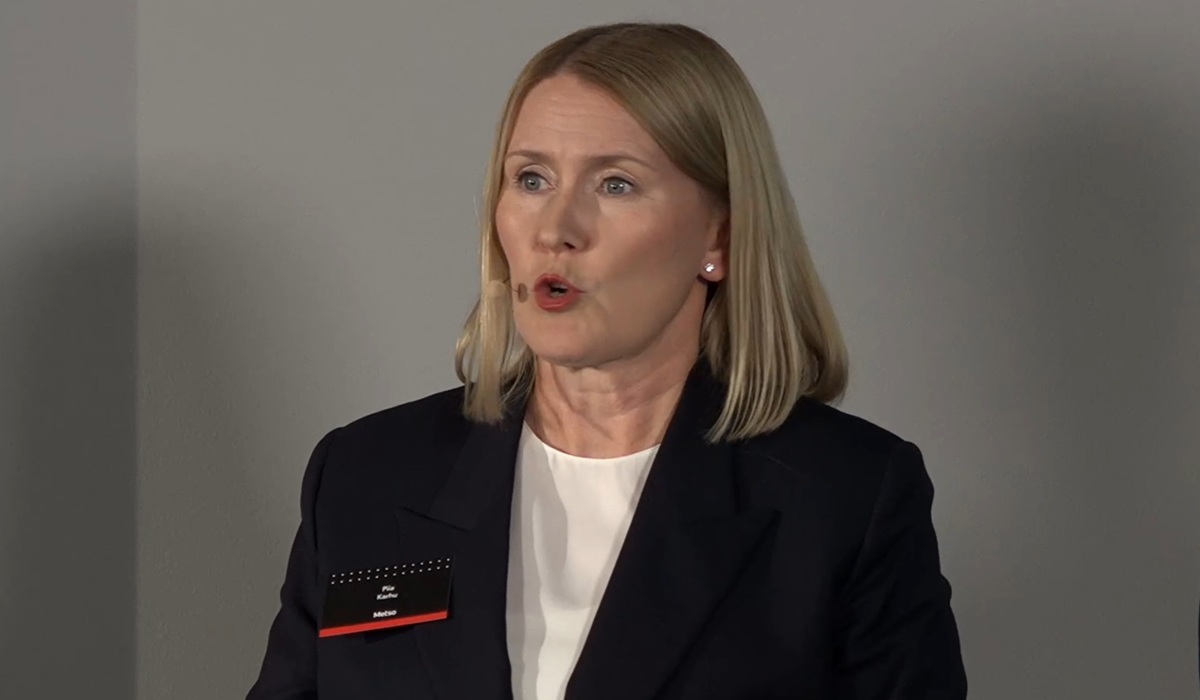
In pumps, where Weir is dominant, Metso believes it is No.3 or 4, while in screens it might be No.2 or 3. “Our target is to become number one or two [in these markets] and that does require different actions. We really have to be doing things differently than what we have been doing so far,” said Karhu. “We will need to expand our product portfolio. Definitely M&A is part of our playbook moving forward. We have a good list of opportunities and also some discussions ongoing at the moment.
“This business is also more regional than some of the other businesses on the minerals processing side. Our approach will also be more regional than what it has been in the past.”
Leveraging its high installed processing plant population and already expanded regional service network is seen as critical to rapidly ramping up pump and screen sales, even before new products are added to the mix.
Crushing, grinding and screening accounted for 55% of Metso’s 2024 minerals sales. Separation, tailings, pumps and dewatering brought in 33% of revenues.
The company sees growth in all these areas as being aligned with its longer-term profit and capital return goals even as regulatory screws tighten on mining’s traditional energy-intensive horizontal milling methods and the volumes of tailings waste generated by standard process flowsheets.
All are sufficiently “aftermarket-intense” to help Metso continue building its high-margin parts and service revenues, which currently contribute 66% of total sales. The company wants this to rise to 70% or more even as it grows capital equipment sales. Services president Heikki Metsala said Metso’s track record since the Outotec merger underlined its delivery credentials. “We have taken our aftermarket business from €1.6 billion to €2.4 billion, so roughly a 9% annual growth rate on this space,” he said.
Metso also doesn’t see more energy-efficient high pressure grinding roll (HPGR) and vertical mills – areas in which it is also claiming market leadership – and even more formative moves into waste recycling and reprocessing, derailing its aftermarket ambitions. All are seen to be able to support Metso’s overarching model.
“We gear up almost everything that we do in the strategy around the aftermarket intensity and captivity going forward,” Takaluoma said.
Karhu put a circa-€100 million value on the HPGR market but said the project pipeline was expanding. She said stirred mills used in primary and secondary comminution, were “still much below half of the market at the moment”.
“The major part of the market today is about the traditional [horizontal] grinding mill,” she said.
“When we look at the next 10 years, for sure, the role of stirred milling will be bigger.
“Metso is the leader in stirred mill technology.
“But really the strength of Metso is that we have width in our portfolio. We are typically seen as the best partner when customers really want to optimise their flow sheet [because] we are not promoting one particular technology over another. They can select the most suitable equipment for their need, which is of course driven by the ore, the end product, the real estate they have, where they are actually putting the plant, etc.”
Metso North and Central America president Guiseppe Campanelli said this month’s Minerita order for a Metso HPGR and Vertimills for a 4.5 million tonnes per annum iron ore pellet plant in Brazil continued its momentum in these market segments. “When we consider 2025 projects that hit the go button, that use HPGRs, Metso has won the vast majority of them, including [this latest project],” he said. “We have the largest operating HPGR in the world. We have introduced HPGR optimisation [flange] technology, which today most HPGRs are using.”
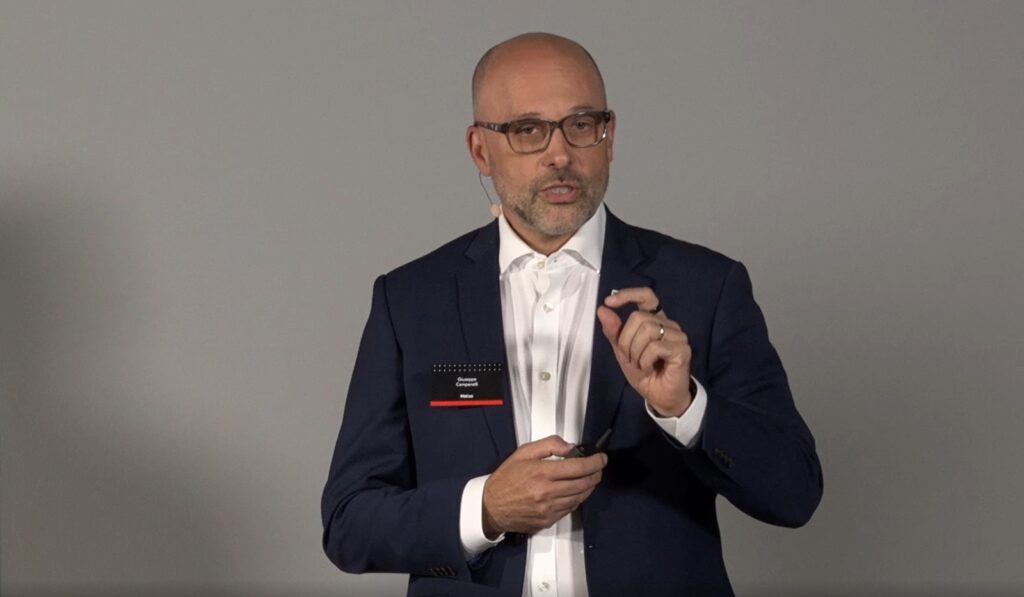
Campanelli cited estimates of a staggering 5% of total world energy use by mining comminution processes and said apart from the material impact on operating costs, energy and fuel supply to remote, off-grid sites was often a showstopper.
“Even if you can connect … the right to access the grid is going to depend on whether or not you can demonstrate that you have an energy efficient project,” he said.
While the long economic life of conventional mills means replacement is rarely appealing, Campanelli says more greenfield projects are considering HPGRs, with project locations, available space (for operations and maintenance) and ore types key factors in trade-off studies. And where the capacity of vertical mills was previously a constraint, he says the technology “is quickly getting better, quickly getting bigger, and that is allowing us to use Vertimills in more mainstream larger-flow circuits”.
Adding this year’s acquired Swiss Tower Mills Minerals HIGmills into the vertical mix means Metso has supplied nearly 930 stirred mills into the market up to the end of 2024.
The company is obviously impatient to grow the number, however, Campanelli said the impact was already significant.
“Just to bring a little perspective,” he said, “those units combined equate to roughly 800 megawatts of saved installed power. From an annual consumption perspective, that is 2.7 million megawatt hours saved per year. In layman’s terms, roughly 25% of all the homes in Finland could be powered by that much energy saved every year.”
A new coarse
Metso is targeting bolt-on acquisitions across its product and service fronts, looking to gain territory as well as to broaden its exposure to new flowsheets. One area it might become more active is ore sorting.
Takaluoma indicated major mining software acquisitions by rivals were not necessarily in Metso’s wheelhouse, saying the company wanted to stay focused on equipment and technology outside the pit: “Where Epiroc stops, Metso starts,” he said. However, internal software and intelligence was a key focus.
“This year is kind of a turning point,” said Metsala. “We have quadrupled the amount of connected equipment in the mineral space.”
Metso is spending €75 million a year on R&D.
Coarse ore grinding and flotation loom as key mineral processing battlefronts for equipment suppliers over the next decade and Karhu said recently introduced ultra-fine-material flotation technology “has been a great success”.
“What we are very excited about is that next year we will launch our course flotation technology to market,” she said.
“It is something that has been long looked at in the industry because it means that there’s been less grinding required from customer perspective. We’ve been working on this area for years already. We’ve been doing intensive testing during the recent year and more, and the results are very good. So we are looking forward to launching this product next year.”
An intriguing analogue here is the work being done by Glencore Technology in coarse ore grinding. The former Mount Isa Mines technology business inherited by Xstrata, which became Glencore, has an impressive global footprint as a mineral processing equipment and technology supplier even if it is virtually invisible as a Glencore business.
Director of strategy and innovation Mike Hourn said on a recent webinar the group was seeing the industry-wide evolution towards lower copper content ores through its parent.
“I think the average grade these days for a copper deposit is around 0.4% copper, which is an enormous amount of earth that needs to be moved for a very small amount of copper.
“We are looking at two key aspects of our technology portfolio to address that.
“One is all of our technology is designed to function perfectly with hypersaline water.
“The other thing that we are actively developing, though, and this is a theme across the industry, is we’re developing ways to get very similar performance out of increasingly coarser particle sizes.
“If you can process minerals at 0.5mm, or 500 micron in size, you are only using about 25-30% of the energy you require if you’re treating them in the traditional method these days of grinding to about 70 micron in size.
“These are exciting new technologies and they are being developed at the moment. We would expect to be deploying these materially in projects around the world in about 3-4 years.
“And that will be central to helping us continue to reduce the amount of energy and water that we need as copper grades continue to decline globally.”

